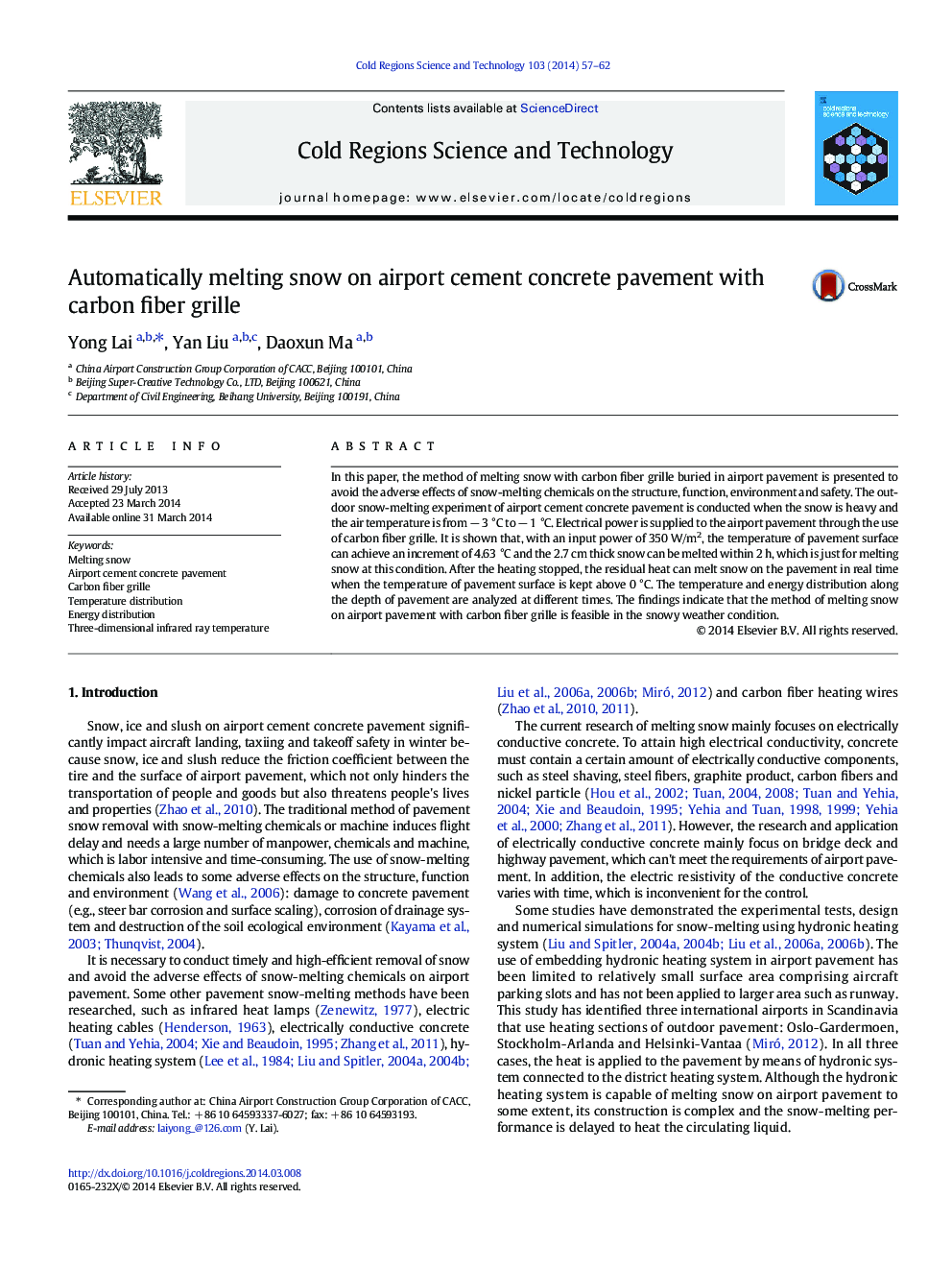| کد مقاله | کد نشریه | سال انتشار | مقاله انگلیسی | نسخه تمام متن |
|---|---|---|---|---|
| 6426924 | 1634459 | 2014 | 6 صفحه PDF | دانلود رایگان |
- The design and construction of airport pavement for snow-melting is reasonable.
- The method of snow-melting can melt accumulated snow and snowfall in real time.
- An input power of 200-350Â W/m2 is required for melting snow on pavement.
- The residual energy in pavement can continue to melt snow for a long time.
- The method of snow-melting is feasible in the snowy weather condition.
In this paper, the method of melting snow with carbon fiber grille buried in airport pavement is presented to avoid the adverse effects of snow-melting chemicals on the structure, function, environment and safety. The outdoor snow-melting experiment of airport cement concrete pavement is conducted when the snow is heavy and the air temperature is from â 3 °C to â 1 °C. Electrical power is supplied to the airport pavement through the use of carbon fiber grille. It is shown that, with an input power of 350 W/m2, the temperature of pavement surface can achieve an increment of 4.63 °C and the 2.7 cm thick snow can be melted within 2 h, which is just for melting snow at this condition. After the heating stopped, the residual heat can melt snow on the pavement in real time when the temperature of pavement surface is kept above 0 °C. The temperature and energy distribution along the depth of pavement are analyzed at different times. The findings indicate that the method of melting snow on airport pavement with carbon fiber grille is feasible in the snowy weather condition.
Journal: Cold Regions Science and Technology - Volume 103, July 2014, Pages 57-62
